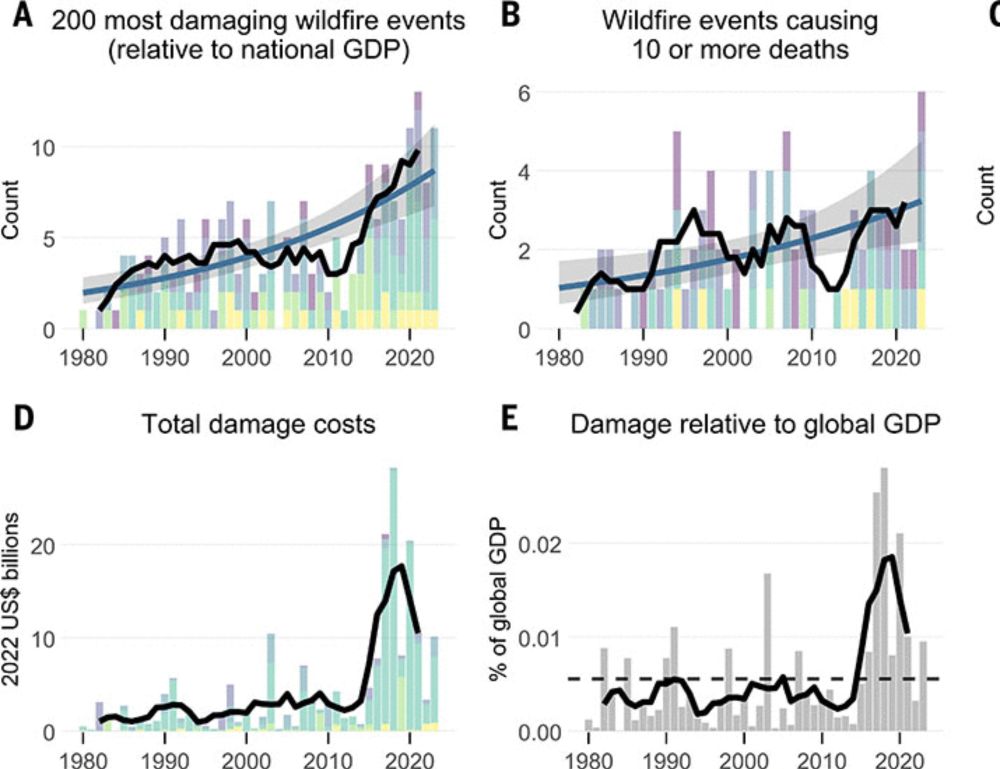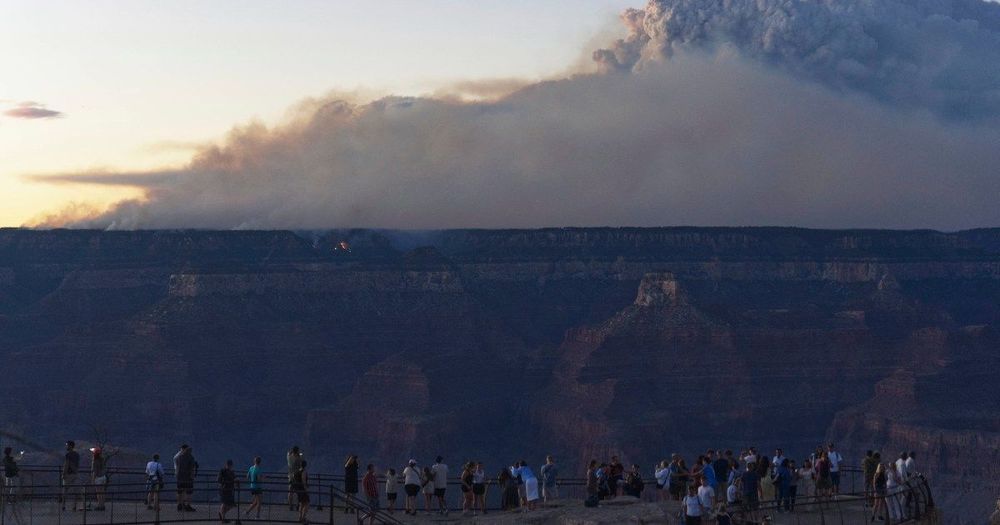
As we all watch Ken Burn’s American Revolution on Public Broadcasting Service (PBS) this evening, remember that federal funding for this public programming has been cut by a president who aspires to be like the king patriots separated from nearly 250 years ago.
17.11.2025 03:34 — 👍 136 🔁 39 💬 3 📌 0
Prohibited activities include advising Chinese graduate students. For reference, a recent Georgetown report estimated 16% of STEM graduate students in the US are Chinese nationals.
This would take out entire fields at the knees, which is perhaps the point.
14.11.2025 02:52 — 👍 771 🔁 410 💬 24 📌 15
Final version now available #AmJBot @botsocamerica.bsky.social
Sequoia & Sequoiadendron: Two paleoendemic megatrees with different adaptive responses to high-severity fires
bsapubs.onlinelibrary.wiley.com/doi/10.1002/...
Plants are not adapted to fire, but to fire regimes
🧪🌍🔥🌳🌿🪴 #ecoevo #wildfire
01.11.2025 19:24 — 👍 65 🔁 24 💬 2 📌 0

Photo of a ski resort with smoke rising above from the fire on the backside of the mountain. In the distance, a retardant drop is being made on a ridge.
Back in the day, I was working a fire near a fancy ski resort. This was when $30 million homes were still unfathomable to me. This guy, who kept bragging that he had the President's personal phone number, came up and said he was going to write a check to pay for all the firefighter meals. 1/
25.10.2025 15:57 — 👍 49 🔁 14 💬 2 📌 2
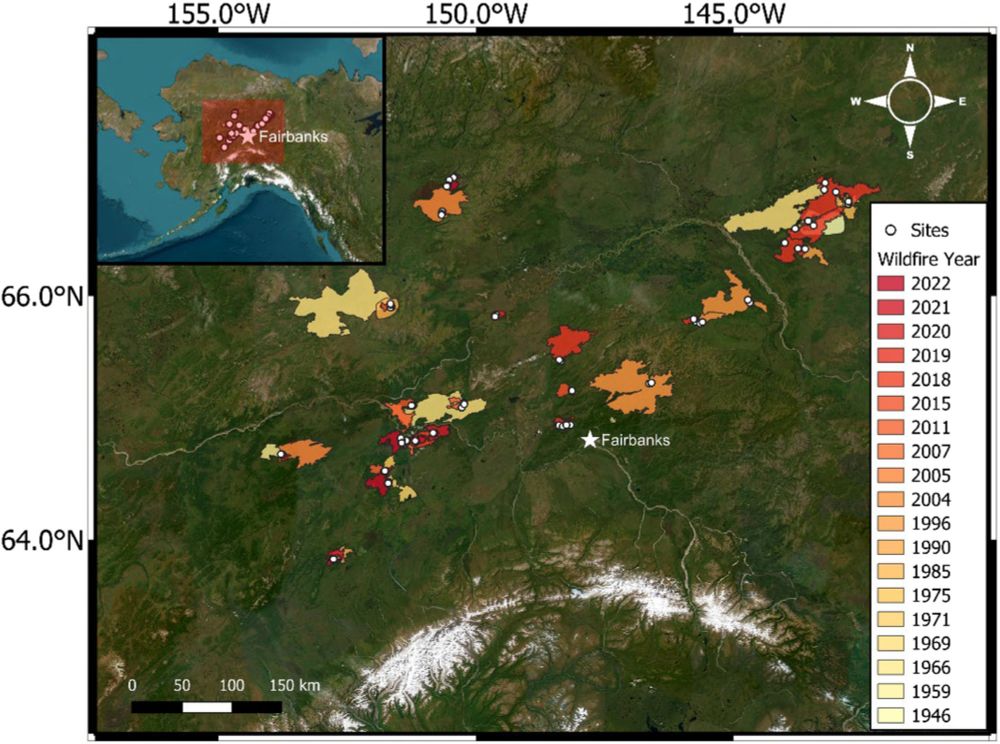
Increasing wildfire frequency decreases carbon storage and leads to regeneration failure in Alaskan boreal forests - Fire Ecology
Background The increasing size, severity, and frequency of wildfires is one of the most rapid ways climate warming could alter the structure and function of high-latitude ecosystems. Historically, boreal forests in western North America had fire return intervals (FRI) of 70–130 years, but shortened FRIs are becoming increasingly common under extreme weather conditions. Here, we quantified pre-fire and post-fire C pools and C losses and assessed post-fire seedling regeneration in long (> 70 years), intermediate (30–70 years), and short (< 30 years) FRIs, and triple (three fires in < 70 years) burns. As boreal forests store a significant portion of the global terrestrial carbon (C) pool, understanding the impacts of shortened FRIs on these ecosystems is critical for predicting the global C balance and feedbacks to climate. Results Using a spatially extensive dataset of 555 plots from 31 separate fires in Interior Alaska, our study demonstrates that shortened FRIs decrease the C storage capacity of boreal forests through loss of legacy C and regeneration failure. Total wildfire C emissions were similar among FRI classes, ranging from 2.5 to 3.5 kg C m−2. However, shortened FRIs lost proportionally more of their pre-fire C pools, resulting in substantially lower post-fire C pools than long FRIs. Shortened FRIs also resulted in the combustion of legacy C, defined as C that escaped combustion in one or more previous fires. We found that post-fire successional trajectories were impacted by FRI, with ~ 65% of short FRIs and triple burns experiencing regeneration failure. Conclusions Our study highlights the structural and functional vulnerability of boreal forests to increasing fire frequency. Shortened FRIs and the combustion of legacy C can shift boreal ecosystems from a net C sink or neutral to a net C source to the atmosphere and increase the risk of transitions to non-forested states. These changes could have profound implications for the boreal C-climate feedback and underscore the need for adaptive management strategies that prioritize the structural and functional resilience of boreal forest ecosystems to expected increases in fire frequency.
Increasing wildfire frequency decreases carbon storage and leads to regeneration failure in Alaskan boreal forests fireecology.springeropen.com/articles/10....
12.10.2025 21:50 — 👍 42 🔁 15 💬 1 📌 0

Although most trees in western USA conifer forests are killed by high intensity crown fires, most California coast redwoods survive by resprouting (photo by Jon Keeley, 2 years after the CZU Fire in Big Basin State Park).
🔥🌱 From the #AJB Special Issue: “Understanding novel #fire regimes using plant trait‐based approaches" 🌱🔥
#Sequoia and Sequoiadendron: Two paleoendemic megatrees with markedly different adaptive responses to recent high-severity fires
By Jon Keeley & @jgpausas.bsky.social
doi.org/10.1002/ajb2...
25.09.2025 17:00 — 👍 11 🔁 5 💬 0 📌 0

Despite congressional threat, National Academies releases new climate report
Things have changed since 2009: We’re more certain about the problems.
National Academies of Science panel finds that: The EPA was right in 2009 (when it found that climate change driven by society’s emissions of greenhouse gases are endangering human health & lives), and that everything we've learned since has only made it more right.
arstechnica.com/science/2025...
19.09.2025 21:49 — 👍 331 🔁 148 💬 3 📌 8

Impact of current and warmer climate conditions on snow cover loss in burned forests
Wildfires are causing earlier snowmelt across the western US, and this effect would be exacerbated with projected warmer winters.
New Science Advances paper on the feedback loop between loss of snow feeding more wildfire, and wildfire resulting in earlier snowmelt. As to latter, in snow obs, under average conditions, snow melts earlier during 1st-yr postfire in 99%(!) of western snow zones.
www.science.org/doi/10.1126/...
19.09.2025 19:14 — 👍 45 🔁 22 💬 0 📌 2
Changing Climate, Changing Fire: Understanding Ecosystem-Specific Fire–Climate Dynamics in Arizona and New Mexico journals.ametsoc.org/view/journal...
16.09.2025 22:50 — 👍 15 🔁 4 💬 0 📌 0

What NIJ Research Tells Us About Domestic Terrorism
Militant, nationalistic, white supremacist violent extremism has increased in the United States. In fact, the number of far-right attacks continues to outpace all other types of terrorism and domestic...
This is an archived government report that found that “Since 1990, far-right extremists have committed far more ideologically motivated homicides than far-left or radical Islamist extremists.”
It existed yesterday and is gone today.
13.09.2025 13:39 — 👍 2106 🔁 1372 💬 46 📌 83
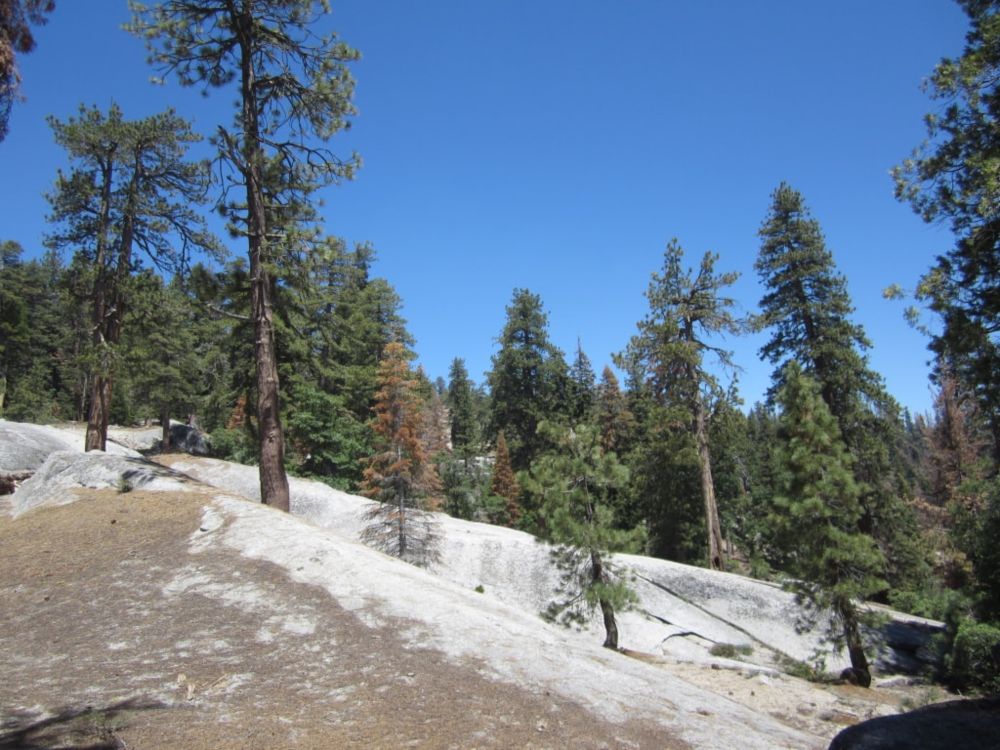
A Eulogy for Teakettle
Justice William O. Douglas, in his dissenting opinion of the Supreme Court’s decision in Sierra Club v. Morton, said “Contemporary public concern for protecting nature’s ecological equilibrium...
The Garnet Fire has burned through a place I have worked since 2002. A place I hold dear. We knew this wasn't a matter of if, but when. Unfortunately the leadership on the Sierra National Forest didn't have the same urgency that we did. My eulogy for Teakettle.
www.hurteaulab.org/blog/a-eulog...
08.09.2025 23:53 — 👍 64 🔁 16 💬 5 📌 6

Figure S4. Percent of sites recording fire that burned in 1652 (a), 1748 (b), 1800 (c), 1855 (d), 2011 (e), and 2021 (f). These correspond to the years in which the highest average percent of sites burned within
hexels in the historical (1600-1880; a-d) and contemporary (1984-2022; e-f) time periods (refer to Fig. 2b). Historically, fires in particularly active fire years were generally widespread across the study area. In 2011, however, fire was more localized and concentrated in the south-central United States (e), and in 2021,
most fire occurred in the Pacific Northwest, with a few additional hexels recording fire elsewhere (f). Overall, fire in particularly active historical fire years was spatially more widespread and ubiquitous
compared to contemporary active fire years
According to supplemental figure 4 of this paper (www.nature.com/articles/s41...), here's the 1748 pattern (top-right panel). 🔥🧪🌍
04.09.2025 02:54 — 👍 9 🔁 2 💬 0 📌 0
Well, this is a stimulating review! Some nice kudos, and a few critiques that are partly accurate, I’d say. I especially like the comparison with “psychedelic wanderings” of hippies! And I agree, it is a “modest intervention” in scholarly history of the Southwest.
05.09.2025 01:12 — 👍 5 🔁 0 💬 0 📌 0
One more thing:
The fire severity data used to conduct this study can be downloaded here. This is a gridded dataset of satellite-derived fire severity and pre-fire NDVI for all fires in the western US that burned from 1985 to 2022.
🔥🌍🧪 #OpenScience
04.09.2025 03:26 — 👍 22 🔁 12 💬 0 📌 0

The merchants of doubt are back
But this time, it's the U.S. government pushing doubt
On The Climate Brink, I write about the DOE report and our response.
02.09.2025 14:12 — 👍 74 🔁 42 💬 2 📌 5

A 1940 Western Apache (Ndee) farm site with two wickiups in a ponderosa pine forest.
CREDIT: Lee Russell/Library of Congress
Tree-ring fire records from 649 pine trees in central and eastern Arizona show that fires occurred more often in the territory of the Western Apache, or Ndee, than in other regions between 1600–1870, suggesting a culturally controlled fire regime. In PNAS: www.pnas.org/doi/10.1073/...
18.08.2025 20:58 — 👍 34 🔁 15 💬 0 📌 0

Thread. Yet another avatar for Dragon Bravo - burning an isolated mesa in the Canyon, this time The Dragon itself (one of the Canyon's most apt placenames).
10.08.2025 14:03 — 👍 17 🔁 4 💬 1 📌 0
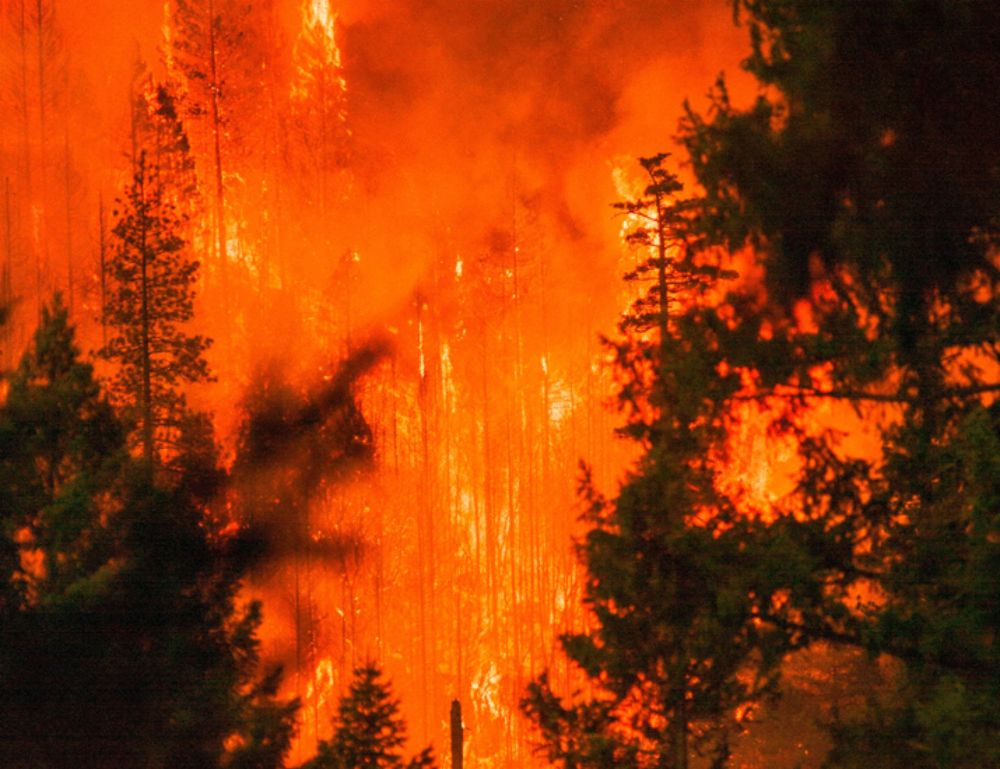
Anthropogenic warming drives earlier wildfire season onset in California
Anthropogenic warming accelerates wildfire season onset in California.
A open-access paper on how wildfire season starts earlier in California thanks to the higher temperatures that fossil fuel burning have caused, and I wasn't able to find one of the authors on here. Kind of the first in a while.
www.science.org/doi/10.1126/...
06.08.2025 19:18 — 👍 50 🔁 25 💬 0 📌 2

Tree rings reveal persistent Western Apache (Ndee) fire stewardship and niche construction in the American Southwest | PNAS
Identifying the influence of low-density Indigenous populations in paleofire records
has been methodologically challenging. In the Southwest United...
Fine work that both extends our knowledge of the past and has implications for today. Ndee (Western Apache) land management did a remarkable job controlling forest fires, even in drought-heavy eras like ours. It defies belief to think today's fire-torn SW has nothing to learn from those guys.
05.08.2025 15:09 — 👍 49 🔁 15 💬 0 📌 0
Interesting paper. Odd though that they don’t cite the ur-paper on tree “Longevity Under Adversity” Schulman’s classic on aridity and ancient trees in Science https://www.jstor.org/stable/1682970
04.08.2025 04:18 — 👍 8 🔁 0 💬 2 📌 0
Every time I open LinkedIn, someone from a science agency shares an unplanned (forced) early retirement or RIF. Lately it’s NASA & EPA. In spring, NOAA. I think people have no idea how deep this loss really is. I don’t know what rebuilding federal science looks like, but it won’t be simple or quick.
26.07.2025 13:19 — 👍 707 🔁 168 💬 39 📌 21
Deputy Executive Editor, The Atlantic. Author of "Stuck: How the Privileged and the Propertied Broke the Engine of American Opportunity." https://www.penguinrandomhouse.com/books/700580/stuck-by-yoni-appelbaum/
Epidemiologist/mathematician. Professor at London School of Hygiene & Tropical Medicine. Author of The Rules of Contagion and The Perfect Bet. Views own.
New book Proof: The Uncertain Science of Certainty available now: proof.kucharski.io
M.Sc. Graduate, KNT University
Photogrammetry | Remote Sensing
Remote Sensing → Environmental Monitoring, Forest Ecology, Wildfire
Photogrammetry → Bundle Adjustment, UAV, Canopy Cover
#RemoteSensing #Photogrammetry #UAV #Drone #DeepLearning #GIS
Médiatrice scientifique à Paléopolis
Paleontology MSc graduate, now science educator
Chelicerates lover🕷🦂❤ & inverts>verts , all living things are beautiful <3
Spec evo enjoyer & Superman stan
Elle/She🏳️⚧️ - Fr/En
All my things: https://linktr.ee/Amypteride
Chicago. Reporter now, @illinoisanswers.bsky.social. Focused on violence, and running to ground things related. Past: CNN, Chicago Tribune.
@RIOldFolksHome in all the places
Writer | Former Humanitarian Surgeon | Reality Strategist
Join my mail list at alkushner.com
Naturalist 🦋 birder 🦉 ornithologist & hummingbird researcher 🪶 field guide author 📖 photographer 📷 artist 🎨 gardener 🌱 chicken/dog mom, desert rat, border resident 🇺🇲🇲🇽, democracy fan 🗽. She/her.
https://bio.link/sherilwilliamson
Living in deep Blue New Mexico
Loving deep green Ireland 🇮🇪
DUH! Women’s rights are HUMAN RIGHTS!
Loathing rapist, traitor Trump forever!
Fuck both the Saudi and Israel terror nations!
ICE = Trump’s goons! #FuckICE
Post-doc & research admin @uscwrigley.usc.edu. Social scientist researching #envcomm #scicomm of climate change, wildfires, Rx fire. Alum of UW-Madison, Colorado State University & UC San Diego. California is home
amandamolder.com
26+ years at @CNBC and @NBCNews / @WSJ alum / Peabody winner
Skeets from the most successful news magazine in TV history, offering hard-hitting investigative reports, interviews, feature segments and profiles of people in the news ⏱️
Reporter and writer: https://fallows.substack.com/ and https://www.ourtownsfoundation.org/ One-time speechwriter, long-time pilot, longer-time husband of linguist/writer Deborah Fallows. Note same wristwatch in the two photos, more than 50 years apart.
Ecosystem science, Global change, Assessments and Scenarios. Co-EiC of Ecosystems with @MonicaGTurner.bsky.social. My website:
https://limnology.wisc.edu/faculty/stephen-r-carpenter/
Veteran, dog mom, criminal. Feet pictures: $reezlie
My book: https://www.spiegelandgrau.com/i-am-not-your-enemy
USA Today opinion columnist. Also in: Chicago Tribune; Los Angeles Times; Guardian; Boston Globe; HuffPost; Hill; NY Daily News, etc. Former federal prosecutor, state prosecutor, and defense attorney for indigent defendants. 🌊 🏳️🌈 #LGBT
Executive editor, features, CNN. Serial fiction and archives of nonfiction at Indignity.net. This Bluesky is about the Machines.
"O, let America be America again—
The land that never has been yet..."
alt history, legislative politics, american studies, and reconstruction | lots of typos | he/him | views my own, normal disclaimers | Double Victory (DVTL) is my book / worldbuilding project | opinions my own, etc normal disclaimers







